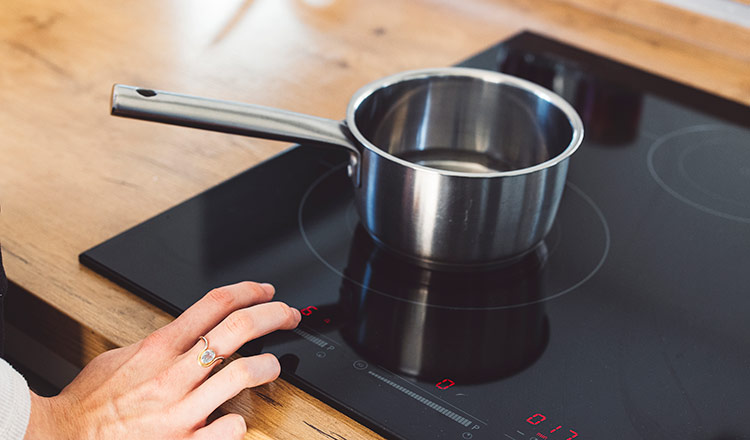Walk into many professional kitchens today, and you’ll notice something different: chefs aren’t always cooking over open flames. Instead, sleek glass cooktops are quietly humming away, heating pans with astonishing speed and precision. This is induction cooking—a technology once reserved for restaurants and culinary schools that’s now becoming more common in home kitchens.
How Induction Works
Unlike gas or electric coils that heat through an open flame or glowing element, induction uses magnetic energy. When you place a compatible pan (think cast iron or stainless steel) on the cooktop, an electromagnetic field transfers energy directly to the cookware itself. The pan becomes the heat source—not the stovetop surface.
The result? Extremely fast, efficient, and even heating. Water boils in a fraction of the time compared to gas or electric, and delicate tasks like melting chocolate or simmering a sauce are easier to control because the temperature adjusts instantly.
Benefits On Induction Cooktops at Home
- Speed and Responsiveness
Induction is fast—sometimes shockingly so. A pot of pasta water can go from cold to boiling in under half the time you’d expect on a traditional stove. Equally important, when you lower the heat, the change is immediate. No waiting for a burner to cool down while your sauce continues to bubble. - Energy Efficiency
Because the pan itself is generating the heat, less energy is wasted. Studies show induction cooktops are more efficient than both gas and traditional electric stoves. That means lower energy bills and a smaller environmental footprint. - Safety
Induction cooktops stay much cooler to the touch than gas or electric burners because the glass surface isn’t generating heat—it’s the pan that’s hot. This makes them safer around kids, pets, and busy households. Plus, if there’s no pan on the burner, the cooktop won’t activate at all. - Easy Cleanup
Spills don’t burn onto the surface the way they can with gas grates or electric coils, since the glass top stays relatively cool. A quick wipe with a damp cloth is usually all you need. - Sleek Design
There’s no denying the visual appeal. Induction cooktops are slim, modern, and can fit seamlessly into a variety of kitchen designs, from minimalist to traditional.
Keep in mind, not all pans work on induction. Cookware needs to be magnetic—cast iron and most stainless steel are safe bets, but aluminum, copper, and glass won’t work unless they have an induction-ready base. A simple test: if a magnet sticks to the bottom of the pan, it’s compatible.
Induction cooktops are generally more expensive than basic gas or electric ranges, though prices have been coming down as the technology becomes more common. Many cooks find the efficiency and performance worth the investment.
Because induction is so fast and responsive, it can feel different at first. That pot of water really will boil in a few minutes, and foods can overcook quickly if you’re not attentive. Most people adjust within a few meals, and many come to prefer the precision.


